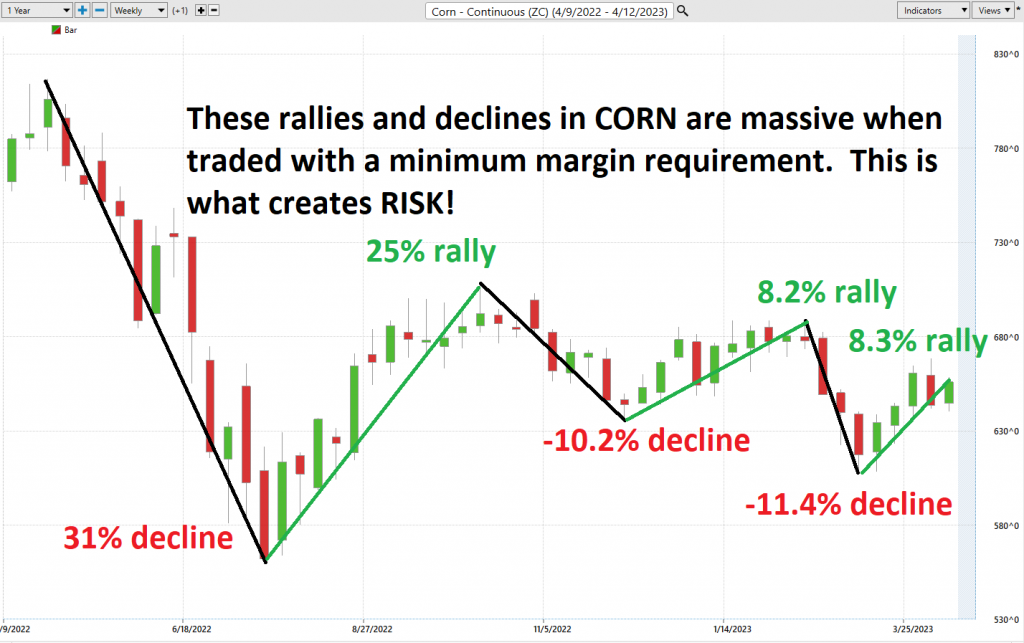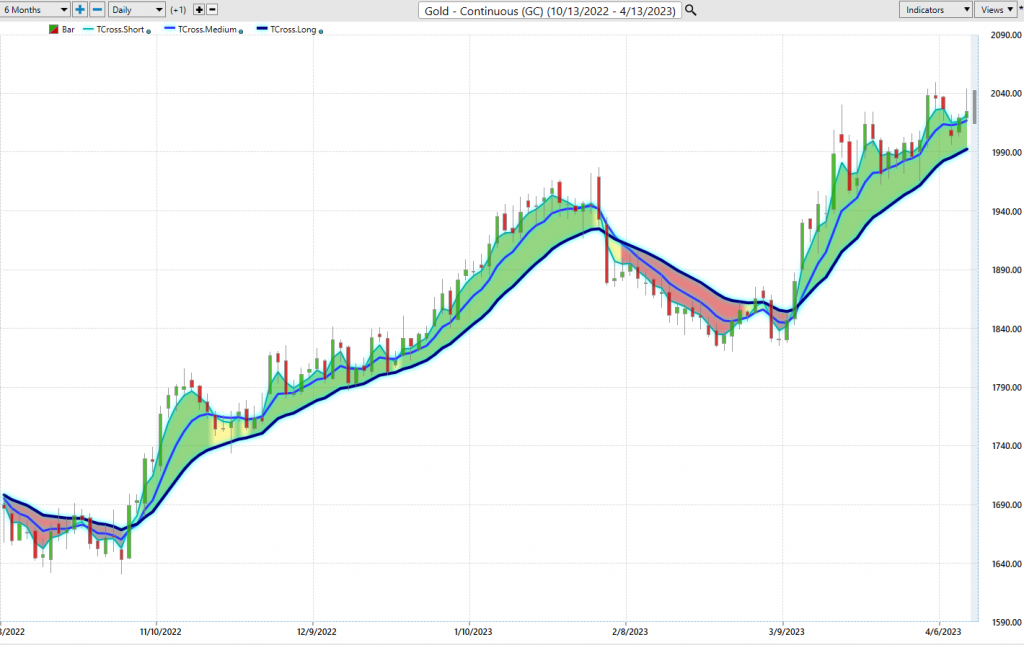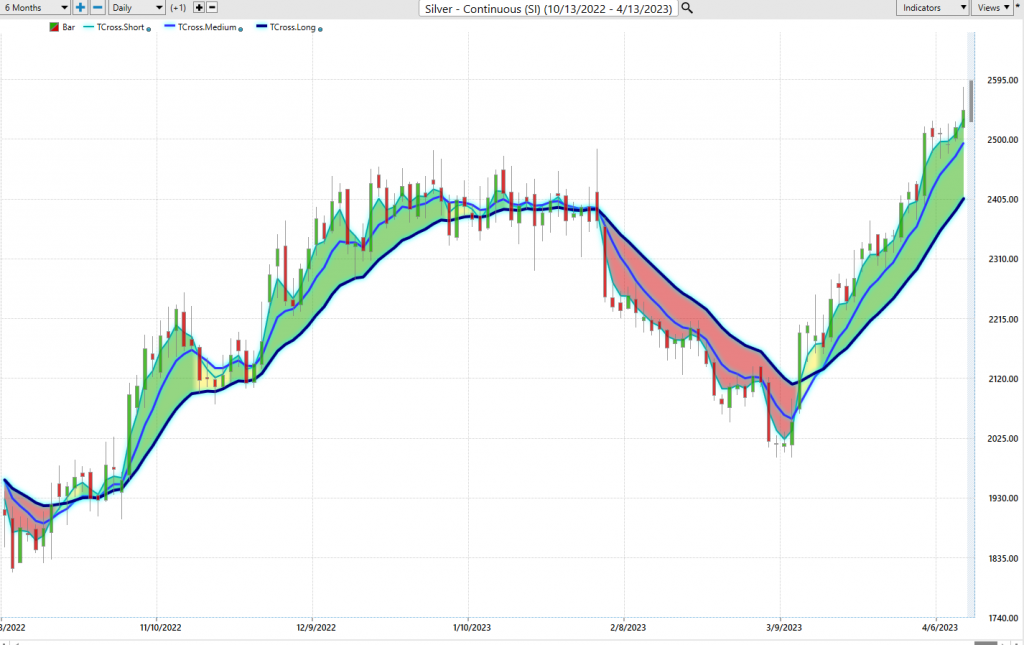One of the themes which we’ve written about extensively is the changing world order of money. Since the Bretton Woods Agreement came into effect in 1944, the U.S. Dollar has been king of the hill and the world’s reserve currency. However, over the last decade Brazil, Russia, India, China, and South Africa have been organizing and forming a “BRICS” currency to challenge the U.S. dollars dominance in world trade.
The Bretton Woods agreement was a pivotal moment in global finance. It established the US dollar as the world’s reserve currency, which meant that other countries pegged their currencies to the dollar at a fixed exchange rate. The US dollar was also convertible to gold at a fixed rate of $35 per ounce, which gave it a stable value in terms of gold.
The Bretton Woods agreement helped stabilize the global economy by reducing currency fluctuations, which made international trade and investment more predictable. Forty-four nations attended the Bretton Woods conference. Historians often say the theme of the conference was a recognition and understanding that what most likely was the cause of World War Two was the currency hyperinflation which had occurred in Germany twenty years earlier, due to the heavy burden of war reparations which was placed on the country. Attendees at Bretton Woods recognized the threat of currency debasement placed on world peace and economic stability.
But as with any system, there were challenges for the United States starting in the 1960’s. The U.S. faced balance of payment deficits due to the cost of the Vietnam War and domestic inflation, leading to a run-on U.S. gold reserves. In 1971, U.S. President Richard Nixon ended the convertibility of the U.S. dollar to gold, which marked the end of the Bretton Woods system and paved the way for floating exchange rates and a worldwide fiat currency system.
Over the last 52 years, nation-states would send the United States their goods and services and we would send them dollars. These nation-states would then purchase U.S. Treasury Bonds with them. This contributed to the last 40+ years bull market in Credit instruments and perpetual declining interest rates.
However, all of that is ending as the BRICS nations are gaining steam and traction in forming a genuine commodity-backed currency outside of the U.S. dollars reach and reign.
Consider the following 21 nation-states who are all part of the B.R.I.C.S nations alliance:
Afghanistan, Algeria, Argentina, Bahrain, Brazil, China, Egypt, India, Indonesia, Iran, Kazakhstan, Mexico, Nicaragua, Nigeria, Russia, Saudi Arabia, Senegal, South Africa, Thailand, United Arab Emirates. These countries will comprise an entity with a GDP 30% larger than the United States, over 50% of the world’s population and they would control 60% of the world’s global oil reserves. Individually they could never pose a threat to the U.S. dollar as the world’s reserve currency. However, collectively they are effectively organizing, and in so doing, are changing the way we have defined money for the last 52 years.
Also, it is noteworthy that countries with regional rivalries, Turkey and Egypt, have all expressed interest in joining BRICS without finding a contradiction.
One of the reasons why the BRICS nations are challenging the U.S. dollar’s reign as the world’s reserve currency is to reduce their reliance on the dollar and increase their own economic power and sovereignty. The U.S. dollar has been the dominant global currency for decades, and many countries hold significant reserves of dollars or U.S. Treasury Instruments to conduct international trade and finance. However, this reliance on the U.S. dollar also exposes these countries to the U.S. monetary policy, which can have adverse effects on their economies.
Therefore, the BRICS nations are exploring alternative options such as creating a new reserve currency, promoting the use of their own currencies in international trade, and increasing cooperation and trade among themselves. These efforts could help reduce their dependence on the U.S. dollar and strengthen their economic power and influence in the global economy.
BRICS is already planting the seeds for the next commodity supercycle. Why? Because the BRICS currency will be backed by a basket of commodity-based products. Real goods like Silver, Gold, Platinum, Crude Oil, Wheat, Corn, Copper, etc. Add on to this value proposition that each nation state desires to exercise its own sovereignty on foreign policy and monetary policy within its country.
If you were a nation state, would you prefer to be paid in fiat currency, or in real hard goods that possess real value in the world economy? In my estimation, this is the gravest threat that the U.S. dollar has faced in its history and should not be taken lightly. This event is also planting the seeds for the next commodity boom. When the actual BRICS currency is defined you will likely see massive interest among traders and investors in real hard goods like commodities. By my way of looking at the world, because of these developments with the BRICS nations we will see massive international demand, and continued geopolitical tensions all contributing to a new form of how money will be defined moving forward.
What does this mean to you as a trader?
Commodities trade on all of the major exchanges of the world. But they are very poorly understood by most traders and investors. Most financial experts consider them very risky because most traders who trade commodities lose money. While this is true what is never addressed is “what is it that creates the risk?”
Commodities in and of themselves are no more volatile than stocks or forex. What creates the risk is the leverage that commodity traders are exposed to when they trade with the minimum margin requirements in their accounts.
Let me explain.
The mechanics of trading commodities are no different than those of trading stocks. What does differ vastly is the margin requirements, and this makes all the difference in the world.
For example, when you trade stocks, most people will trade with a 100% capitalized position. Stock traders can borrow money from the brokerage company and trade on a 50% margin requirement which means that they are making a good faith down payment of 50% of the value of the stock and borrowing the remaining 50%. In the world of stock trading this is an example of high leverage.
However, in the world of commodities trading, usual margin requirements to trade commodity futures contracts are usually around 10% of the value of the contract. THIS IS WHAT CREATES THE RISK. For example:
Corn trades on the Chicago Board of Trade it is a 5000-bushel contract. The current price is around $6.55. his means that the full dollar value of the corn contract is $32,750. However, to trade corn the margin requirement is only $3,000!
So, to control $32,750 worth of corn, you only need to deposit $3000 in your account. This represents a 9.1% good faith deposit. The margin requirement is what you need to have in your account to buy or sell one contract of corn. But this is also where the rubber meets the road. When CORN moves 9.1% in one direction or another you have 100% gains or losses. If Corm moves 20 cents against you, because of these low margin requirements you receive a margin call and need to deposit more money into your account.
The reason why most commodity traders lose money is primarily that they step in to trade this market with the minimum margin requirement and they are not equipped to handle the leverage.
Look at any blue-chip stock, if you were trading it with only a 9.1% good faith deposit it too would be very risky.
Commodity traders often use leverage and margin to amplify their returns, but this can also increase their risk. If a trade goes against them, they may be forced to sell at a loss or face margin calls that require them to put up additional capital.
The solution is: don’t trade on minimum margin and reduce your leverage.
Here is a chart of Corn over the last 52 weeks. The magnitude of the declines or rallies is nothing out of the ordinary. But when you calculate this movement as a ratio of a 9.1% margin deposit, you can understand how commodities have developed a reputation as being risky.

Notice how on the chart above these moves on the 52-week chart are no more severe than the moves in the broader stock market indexes. Leverage = RISK.
The top popular commodities in the world that are under consideration to be part of the BRICS currency are listed below:
Crude oil
Gold
Silver
Copper
Aluminum
Zinc
Lead
Iron ore
Nickel
Tin
Platinum
Palladium
Diamonds
Coal
Natural gas
Wheat
Corn
Soybeans
Rice
Coffee
Cocoa
Cotton
Sugar
Orange juice
Lumber
Rubber
Wool
Leather
Hides
Fish
Shrimp
Crabs
Lobster
Cattle
Pork
Chicken
Lamb
Goat
Dairy products (milk, cheese, butter)
Eggs
Fruits (apples, oranges, bananas, etc.)
Vegetables (potatoes, onions, carrots, etc.)
Spices (pepper, cinnamon, cloves, etc.)
Nuts (almonds, peanuts, cashews, etc.)
Timber
Cement
Steel
Iron
Coal
Salt
Let’s look at this another way. Below is a listing of 19 of the top commodity traders in the world. These are traders who have made many billions of dollars trading the financial markets. I contend that if you learn anything from reading this article it’s that these wizards understand the importance of having staying power in a market. These Market Wizards would never trade with a minimum margin requirement. They recognize holding a position in the marketplace requires that you reduce your leverage. I invite you to take some time and study these traders.
Richard Dennis – Founder of C&D Commodities (1970s-1980s), known for his Turtle Trading System.
Paul Tudor Jones – Founder of Tudor Investment Corporation (1970s-2010s), website: tudorinvestment.com, author of “The Trader” and “Paul Tudor Jones: Earn the Right to Risk.”
George Soros – Founder of Soros Fund Management (1970s-2010s), website: soros.com, known for his Quantum Fund and his involvement in Black Wednesday.
Louis Bacon – Founder of Moore Capital Management (1980s-present), website: moorecapital.com, known for his global macro trading style.
Bruce Kovner – Founder of Caxton Associates (1980s-2010s), website: caxton.com, author of “Trading Interviews: Lessons from a Master Trader.”
Jim Rogers – Co-founder of Quantum Fund with George Soros (1970s-present), website: jimrogers.com, author of “Investment Biker” and “Hot Commodities.”
Marc Rich – Founder of Glencore (1960s-1990s), website: glencore.com, known for his involvement in commodity trading and for being controversially pardoned by President Bill Clinton.
Andrew Hall – Founder of Astenbeck Capital Management (1990s-present), website: astenbeck.com, known for his expertise in oil trading.
Michael Marcus – Founder of Marcus & Company (1970s-1990s), known for his trading style that focused on trends and risk management.
Ed Seykota – Founder of Technical Tools (1970s-1990s), website: seykota.com, known for his trend-following system and his involvement in the development of computerized trading.
Victor Sperandeo – Founder of Alpha Financial Technologies (1970s-1990s), website: alphasystems.com, known for his trading style that combined fundamental and technical analysis.
Bill Lipschutz – Co-founder of Hathersage Capital Management (1980s-1990s), known for his expertise in currency trading.
Pierre Andurand – Founder of Andurand Capital Management (2000s-present), website: andurandcapital.com, known for his expertise in oil trading and author of “Oil’s Endless Bid.”
John Arnold – Founder of Centaurus Energy (2000s-present), website: centaurusenergy.com, known for his expertise in energy trading.
Ray Dalio – Founder of Bridgewater Associates (1970s-present), website: bridgewater.com, known for his principles-based approach to investing and author of “Principles” and “The Changing World Order.”
Kenneth Griffin – Founder of Citadel LLC (1990s-present), website: citadel.com, known for his quantitative trading strategies and author of “Citadel Global Financial Crisis Handbook.”
Eric Sprott – Founder of Sprott Inc. (1990s-present), website: sprott.com, known for his expertise in precious metals trading and author of “The Real Crash.”
John Paulson – Founder of Paulson & Co. (2000s-present), website: paulsonco.com, known for his expertise in credit default swaps and author of “The Greatest Trade Ever.”
David Einhorn – Founder of Greenlight Capital (2000s-present), website: greenlightcapital.com, known for his value investing style and author of “Fooling Some of the People All of the Time.”
I share these top commodity traders with you because I see a major commodity supercyle occurring based upon the formation of the BRICS nations and their forming of a commodity backed currency. As the U.S. dollar continues to be debased people are going to want real goods and not paper assets.
The ultimate goal is always financial success, regardless of public opinion, or what is going on in the world. For traders, this means staying competitive in constantly changing market conditions and beating inflation to generate more revenue by aligning with the right trends at the right times.
While I have shared my opinion on the current economic environment, I do not let it influence my trading decisions. Instead, I rely on artificial intelligence, neural networks, and machine learning to guide me.
Here is a chart of GOLD over the last 6 months.

Here is chart of Silver.

When these charts disagree with the thesis, I’ll move to the sidelines.
Every trader has experienced losses, but winners learn from them and use the knowledge to their advantage. Artificial intelligence is powerful because it learns from mistakes and continually searches for a better solution, making it a game-changer for traders.
Don’t wait for the Fed to pivot – take control of your trading decisions with the power of machine learning.
Since artificial intelligence has beaten humans in Poker, Chess, Jeopardy and Go! do you really think trading is any different?
Knowledge. Useful knowledge. And its application is what A.I. delivers.
You should find out. Join us for a FREE Live Training.
We’ll show you at least three stocks that have been identified by the A.I. that are poised for big movement… and remember, movement of any kind is an opportunity for profits!
Discover why artificial intelligence is the solution professional traders go-to for less risk, more rewards, and guaranteed peace of mind.
Intrigued? Visit with us and check out the a.i. at our Next Live Training.
It’s not magic. It’s machine learning.
Make it count.
IMPORTANT NOTICE!
THERE IS SUBSTANTIAL RISK OF LOSS ASSOCIATED WITH TRADING. ONLY RISK CAPITAL SHOULD BE USED TO TRADE. TRADING STOCKS, FUTURES, OPTIONS, FOREX, AND ETFs IS NOT SUITABLE FOR EVERYONE.
DISCLAIMER: STOCKS, FUTURES, OPTIONS, ETFs AND CURRENCY TRADING ALL HAVE LARGE POTENTIAL REWARDS, BUT THEY ALSO HAVE LARGE POTENTIAL RISK. YOU MUST BE AWARE OF THE RISKS AND BE WILLING TO ACCEPT THEM IN ORDER TO INVEST IN THESE MARKETS. DON’T TRADE WITH MONEY YOU CAN’T AFFORD TO LOSE. THIS ARTICLE AND WEBSITE IS NEITHER A SOLICITATION NOR AN OFFER TO BUY/SELL FUTURES, OPTIONS, STOCKS, OR CURRENCIES. NO REPRESENTATION IS BEING MADE THAT ANY ACCOUNT WILL OR IS LIKELY TO ACHIEVE PROFITS OR LOSSES SIMILAR TO THOSE DISCUSSED ON THIS ARTICLE OR WEBSITE. THE PAST PERFORMANCE OF ANY TRADING SYSTEM OR METHODOLOGY IS NOT NECESSARILY INDICATIVE OF FUTURE RESULTS. CFTC RULE 4.41 – HYPOTHETICAL OR SIMULATED PERFORMANCE RESULTS HAVE CERTAIN LIMITATIONS. UNLIKE AN ACTUAL PERFORMANCE RECORD, SIMULATED RESULTS DO NOT REPRESENT ACTUAL TRADING. ALSO, SINCE THE TRADES HAVE NOT BEEN EXECUTED, THE RESULTS MAY HAVE UNDER-OR-OVER COMPENSATED FOR THE IMPACT, IF ANY, OF CERTAIN MARKET FACTORS, SUCH AS LACK OF LIQUIDITY. SIMULATED TRADING PROGRAMS IN GENERAL ARE ALSO SUBJECT TO THE FACT THAT THEY ARE DESIGNED WITH THE BENEFIT OF HINDSIGHT. NO REPRESENTATION IS BEING MADE THAT ANY ACCOUNT WILL OR IS LIKELY TO ACHIEVE PROFIT OR LOSSES SIMILAR TO THOSE SHOWN.




